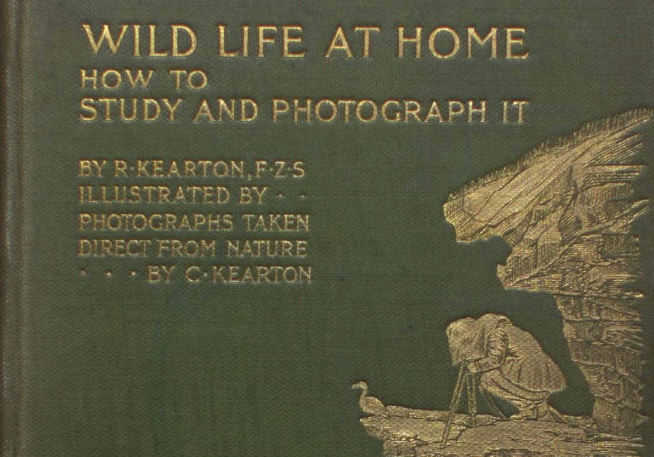The Wildlife Photographer of Yesteryear

The Wildlife Photographer of the Year competition is celebrating its 50th year, and the exhibition showing this year's outstanding images of the natural world opened at the ROM last week. Wildlife photography has a history nearly as long as the medium itself. Artists of other mediums had of course been creating images of the natural world for centuries, but photography presented new possibilities to artists and scientists studying the world around them.

Authors of books on natural history recognized the value of illustrating their texts with images of the birds, fish and animals that they discussed. The classic work of natural history, Gilbert White’s Natural History of Selborne, was first published in 1789 and has been continuously in print ever since. The first edition was illustrated with engravings after paintings by Samuel Hieronymus Grimm, who visited Selborne for several weeks in order to draw from life.
In 1880 White’s Natural History was still being illustrated, this time by P.H. Delamotte.

However, from the early days of photography, its usefulness as a tool for faithfully recording the natural world was recognized. By the 1924 edition of the Natural History, artist renderings of the natural world have been exchanged for the more accurate photograph.
Early wildlife photographers were confronted with some practical difficulties. The equipment was large, bulky, and heavy to carry around, it needed to be securely stationed while the photograph was taken, and it was difficult to manoeuvre in challenging terrain. Books for enthusiastic amateur photographers were published to show them techniques of use in the field. They demonstrated ways
...to climb a tree… ... to become the tree ...


... to secure the camera in difficult terrain …

... and even how to descend from a clifftop with camera in tow.

Photography was also expensive and time-consuming. The author of a small volume published in 1901 called A Sportsman’s Photography offers this advice to a new wildlife photographer:


"Care and patience should be his guiding stars. On no account should he snap at this, that, and t’other thing, everything, as if plates cost nothing, and success depended upon the quantity of plates exposed. … A picture that you would like to have, take, and try to make a good one of it. Use care and judgement, and let these two words always be your motto, no matter what you may be doing in photographic work."
